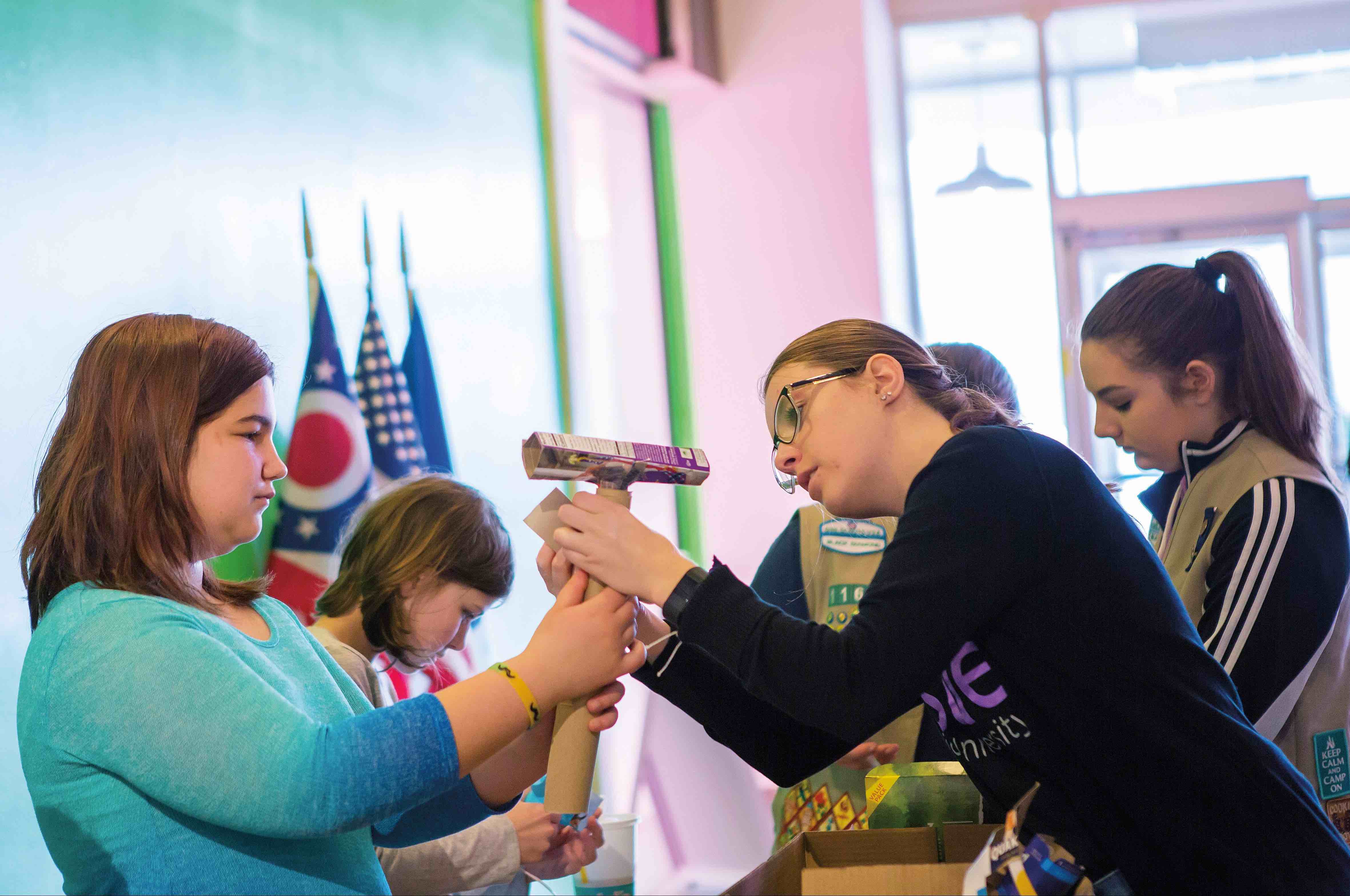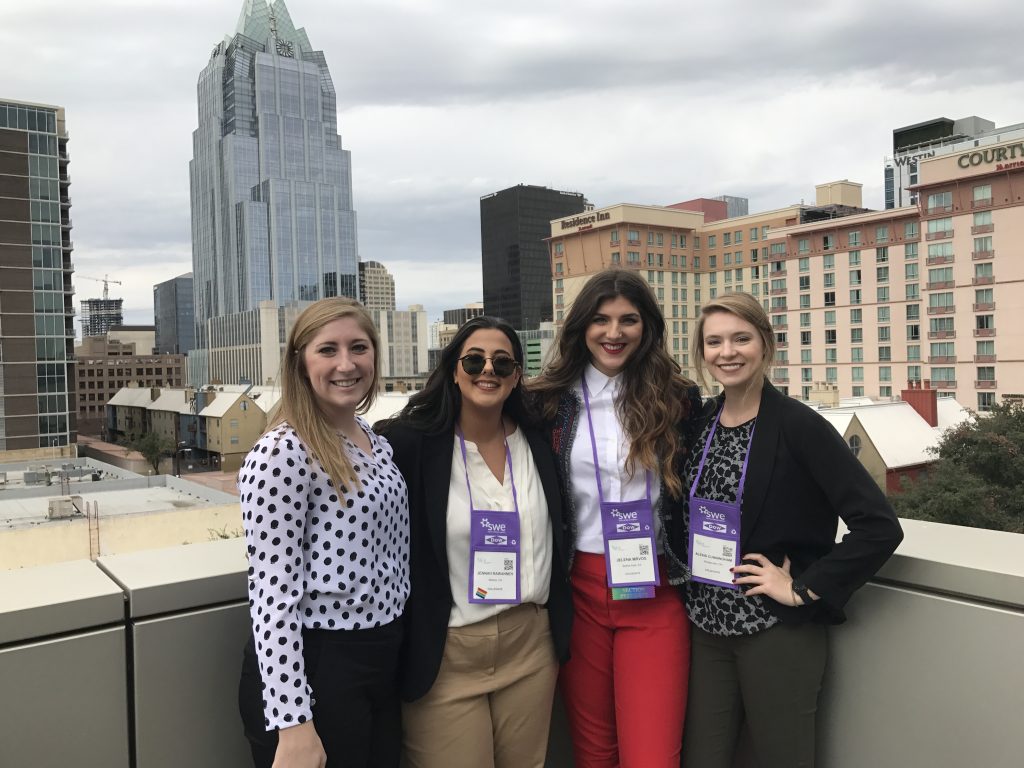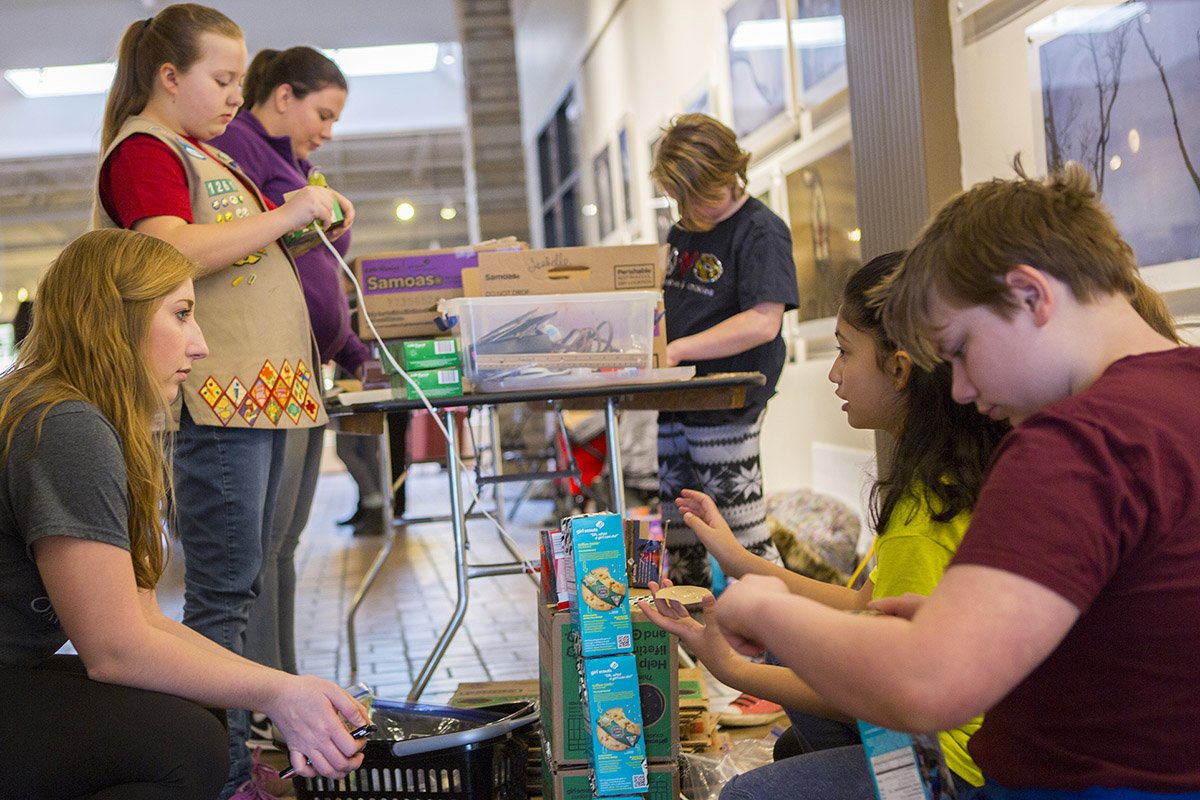
The future (of engineering) is female
Ohio University students studying engineering and technology know to expect rigorous coursework and lots of career options. The field’s female students also know to expect a huge gender gap.
Cat Hofacker, BSJ ’18 | October 28, 2018
Share:
“It’s shocking when you sit in a classroom and realize there’s only eight or something girls in the class,” says Jelena Mrvos, a senior studying mechanical engineering. “I remember being shell-shocked about that freshman year.”
Women hold only 24 percent of jobs in STEM fields, according to a 2017 study by the U.S. Department of Commerce. In engineering, that number shrinks to just 14 percent.
Undiscouraged, Mrvos found support in the Russ College of Engineering and Technology ’s chapter of the Society of Women Engineers (SWE), a student group that provides professional development opportunities and local outreach programs for women in the field.
“I heard it was a great place to go to meet female peers in my major, and in engineering in general, because we all knew going in that it was going to be male-dominated,” says Mrvos, who went on to serve as SWE’s president last year.
Women helping women
From the chapter’s informal mentoring program that pairs younger students with junior and senior members in their major, to regular regional and national conference attendance, SWE builds its members’ skills and professional networks by fostering a supportive community.
“Just by being in SWE, you have upperclassmen to go to about anything you want,” Mrvos says. “But through the mentor-mentee program, you’re assigned a specific person you know you can always go to, somebody who will try to give you the best answer they can.”
At conferences, SWE members can attend information sessions and hear about the experiences of women in the industry. This year’s SWE president, Ashley Weitzel, believes incorporating similar opportunities in local meetings can further benefit members.

Russ College of Engineering and Technology SWE members (L to R) Rachel Zelinsky, Jennah Rawahneh, Jelena Mvros, and Alexis Cunningham attend the 2017 Society of Women Engineers National Conference, held in Austin, Texas, in October of last year. Photo courtesy of SWE
“We had a former [SWE] president Skype in and tell us about her experience going into the workforce and taking graduate classes online, and some of our members are on that same path,” says Weitzel, a junior studying chemical engineering. “That can further our knowledge in moving forward in the workforce.”
Mrvos says it’s those kinds of “honest conversations” that will help SWE members as they start their careers.
“The best way to learn how to deal with those things is by talking and listening to the experiences of women who have gone through that,” she says. “Being in an organization where it’s about women is the best way to learn how to handle those things in the real world.”
Speaking up
SWE members don’t waste time applying these lessons. Mrvos says she has already been in several situations where she’s been able speak about gender inequity, including during a summer internship, where she was the only woman in her department.
“I got to have a couple very honest conversations with my boss about it, and he made it very clear that ‘if you feel uncomfortable or if lines are crossed, let us know,’” she says. “Having people like that and men like that in the industry … and having those conversations with people in school will really help turn things around.”
SWE adviser Carol Hill, a lecturer of engineering and technology fundamentals, says that although more attention is being paid to the lack of women in engineering, the solution isn’t necessarily just increased enrollment. The rigorous coursework combined with the glaring reality of being a “gender minority” is enough to drive some women away from the field, but Mrvos and Weitzel have held firm. That confidence is key, Hill says.
“It does take a determination,” she says. “It does take a drive. You are always judged on whether you are capable, even though you are. It’s that confidence that has to come along with it and support you.”

Russ College of Engineering and Technology SWE members Rachel Belinsky (foreground) and Caitlin Finnearty (background) help local Girl Scouts construct their own Rube Goldberg machines at an event at the Market on State, held in April. Photo by Ashley Stottlemyer
A rising tide
The women of SWE are also setting an example of their own for future generations. At annual events for Athens’ Girl Scouts, Brownies, and Daisies, girls as young as 6 are asked to complete various challenges using engineering techniques.
“Seeing them communicate with each other and bounce ideas off each other to create a working experiment was very mind-boggling and awesome to see happen,” Weitzel says.
Mrvos says it’s important to introduce students to STEM fields during their formative years. Although the industry might seem male-dominated now, those “elementary school kids building circuit boards” will grow up some day.
“It’s going to take years until those kindergartners who are on their iPads playing engineering games get all the way through college,” Mrvos says. “It’s a slow process and slow change, but I think we’re absolutely headed down the right path."
Feature photo: Chemical engineering senior and Society of Women Engineers President Ashley Weitzel (RIGHT) helps an Athens-area Girl Scout assemble a Rube Goldberg machine at the groups’ “Buildings, Brains, and Boxes” design contest this spring. Photo by Ashley Stottlemyer


